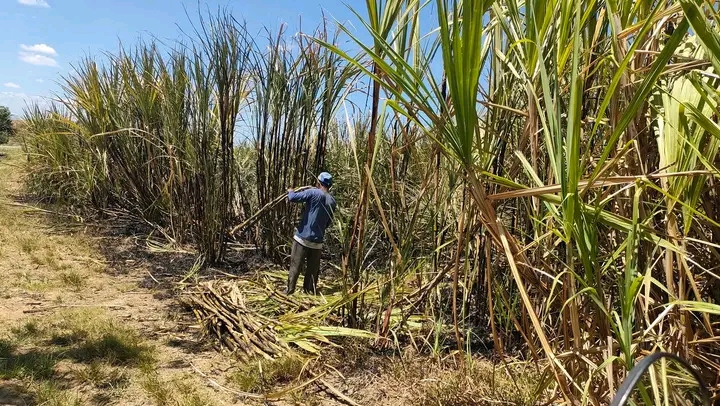Tuesday , 9 April , 2024
McCreadie Andias
Research strongly suggests that at certain exposure levels to some of the chemicals in plastic products, such as bisphenol A (BPA), may cause cancer in people.
Plastics themselves do not directly cause cancer, but some chemicals used in their production or released during their use can pose health risks, including carcinogenic effects.
Depending on where you live and work, you’re likely to be exposed to many plastic products every day. Food and beverage containers, some disposable plates, and toiletry bottles are all plastic and all are made from chemicals.
Research suggests that all plastics may leach chemicals if they’re scratched or heated.
Bisphenol A (BPA) is a weak synthetic estrogen found in many rigid plastic products, food and formula can linings, dental sealants, and on the shiny side of paper cashier receipts (to stabilize the ink).
Its estrogen-like activity makes it a hormone disruptor, like many other chemicals in plastics. Hormone disruptors can affect how estrogen and other hormones act in the body, by blocking them or mimicking them, which throws off the body’s hormonal balance.
Because estrogen can make hormone-receptor-positive breast cancer develop and grow, many women choose to limit their exposure to these chemicals that can act like estrogen.
BPA also seems to affect brain development in the womb. In 2011, a study found that pregnant women with high levels of BPA in their urine were more likely to have daughters who showed signs of hyperactivity, anxiety, and depression.
The symptoms were seen in girls as young as 3. It’s not clear why boys aren’t affected in the same way.
Phthalates chemicals are commonly used as plasticizers in PVC (polyvinyl chloride) products such as toys, medical devices, and food packaging. Some phthalates, like DEHP and BBP, have been classified as carcinogenic or potentially carcinogenic by organizations like the International Agency for Research on Cancer (IARC).
Another chemical, Styrene, Found in polystyrene plastics used in food containers, packaging materials, and disposable cups , has been classified as a possible human carcinogen by IARC, particularly associated with lung cancer and lymphoma among workers in industries where it’s used.
Vinyl chloride Used in the production of PVC, vinyl chloride is a known huhuman carcinogen. Workers exposed to high levels of vinyl chloride in manufacturing facilities have shown increased rates of liver, lung, and other cancers.
Additionally, Various Plastic additives used in plastics, such as flame retardants, stabilizers, and colorants, can contain carcinogenic substances like brominated flame retardants, which have been linked to thyroid cancer and other health issues.
While not directly causing cancer, microplastics can adsorb and concentrate toxic chemicals from the environment. When ingested by organisms, including humans, these chemicals can potentially contribute to cancer development over time.
How do we protect ourselves from carsinogenic plastics?
While it’s likely impossible to completely avoid all plastic products, try to use as little plastic as possible, especially if you’re pregnant, and never use it around food.
To reduce your exposure to BPA:
Carry your own glass, steel, or ceramic water bottle filled with filtered tap water instead of plastic bottles and Use baby bottles with labels that say “BPA free.”
You can also Reduce how much canned food you eat and how much canned formula your baby uses.
Avoid handling carbonless copy cash register receipts. If you get a carbonless receipt, don’t recycle it.
Recycling receipts with BPA in them can spread the BPA to other products made with recycled paper, including napkins and toilet paper.
Additionally, Look closely at plastics with a number 7 recycling symbol on the bottom. If the plastic doesn’t also say “PLA” or have a leaf symbol on it, it may contain BPA. See the chart below for more information on plastic types.
To reduce your exposure to other chemicals in plastics:
Don’t cook food in plastic containers or use roasting/steaming bags; the plastic residues may leach into food when heated in a regular or microwave oven.
Use glass, porcelain, enamel-covered metal, or stainless steel pots, pans, and containers for food and beverages whenever possible, especially if the food or drink is hot.
Plastics with recycling symbol 2, 4, and 5 are generally considered OK to use. Plastics with recycling symbol 7 are OK to use as long as they also say “PLA” or have a leaf symbol on them. The recycling symbol number is the code that shows what type of plastic was used to make the product.
Recycling symbol 1 is also OK to use, but shouldn’t be used more than once (no refilling those store-bought water bottles!). Keep all plastic containers out of the heat and sun.
Polyethylene terephtalate (PETE or PET) plastics includes clear plastic soda and water bottles are generally considered OK to use, but don’t reuse.
High density polyethylene (HDPE) plastics includes opaque milk jugs, detergent bottles, juice bottles, butter tubs and toiletry bottles are considered OK to use.
Polyvinyl chloride (PVC) plastics includes food wrap, cooking oil bottles, and plumbing pipes; do not cook food in these plastics and try to minimize using no. 3 plastics around any type of food (use wax paper instead of plastic wrap and use glass containers in the microwave).
Low density polyethylene (LDPE) includes includes grocery bags, some food wraps, squeezable bottles, and bread bags are considered OK to use.
Polypropylene plastics includes most yogurt cups, water bottles with a cloudy finish, medicine bottles, ketchup and syrup bottles, and straws are also considered OK to use.
Polystyrene/Styrofoam plastics includes disposable foam plates and cups and packing materials; do not cook food in these plastics and avoid using no. 6 plastics around any type of food.
Additionally, Do not cook food in no. 7 plastics that aren’t PLA and avoid using non-PLA no. 7 plastics around any type of food.
Reducing exposure to plastics, especially those containing harmful chemicals, and advocating for stricter regulations on the use of carcinogenic substances in plastic production are essential steps to mitigate the potential health risks associated with plastics and cancer.





